When it comes to long-range shooting you can’t go cheap and expect quality results, this review comprehensively covers the best long range rifle scopes.
Best Long Range Rifle Scopes-Our Top Picks
| Rifle Scope | Image | Best Price |
| 1) Vortex Viper HS 4-16×50 Long Range Scope | 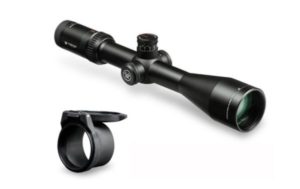 |
|
| 2) Trijicon Accu Point 1-4×24 Riflescope | 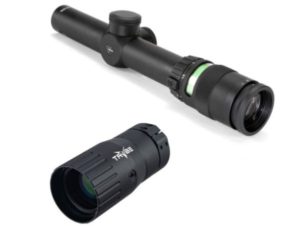 |
|
| 3) Leupold Mark 5HD 5-25x56mm Riflescope | 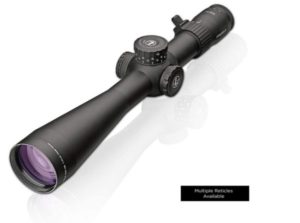 |
|
| 4) Shepherd Scopes Rugged Series 1-8×24 R-MIL Illuminated Riflescope | 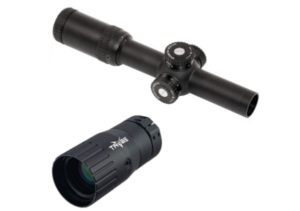 |
|
| 5) Leupold VX-5HD 3-15x44mm | 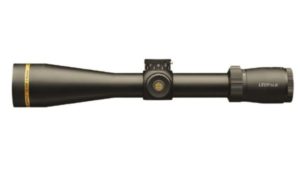 |
|
| 6) Hawke Sport Optics Frontier 30 1-6×24 IR Riflescope | 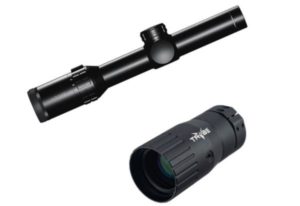 |
|
| 7) Burris XTRII 2-10x42mm Riflescope | 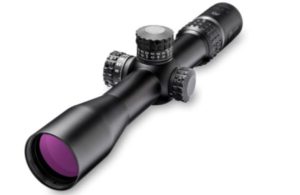 |
Considerations for the Best Long Range Rifle Scopes
- Magnification power
A lot of people focus on this more than anything else and many believe that the more powerful the magnification the better. This is partially true however, it depends on your situation and also your overall shooting goals.
To determine how much magnification you will require, consider your normal shooting range and the size of your targets. The farther your target is the smaller it will be and the more magnification you will require.
Generally, at least 10x magnification is used for long-range shots. In competition shooting 20x+ power is usually used. You may be tempted to use the highest magnification scopes.
Remember that the higher the magnification, the costlier the scope will be. Scopes with higher magnification are also heavier than those with smaller magnification power. If you never shoot beyond 400 yards and your targets are not too small, a scope with a magnification power of more than 15xwill be ideal.
- Objective lens size
The size of the objective lens is important it gathers light which creates the image you see when you look through it. Every scope has an objective lens, but what should you look for in an objective lens if you want to shoot long range?
The larger the objective lens, the more light it collects, which makes it useful in dimly lit conditions. Nevertheless, you should never select an objective lens that is too big.
Even if it gives you a better view, it might negatively affect your shooting performance. You may ask how? By altering the balance point of your rifle and adding unnecessary weight.
This large diameter means that you will need to use a higher scope mount. When you begin using high rings, or high single-piece mounts you start reducing the overall precision of your rifle by mounting the optic higher than the barrel.
The general rule of the mounting height is the closest to the barrel the better. The optimum objective lens sizes are between 42mm-50mm.
- Reticle
Reticle choice is also very crucial when it comes to choosing the best long-range rifle scopes. There are tons of specialty reticles out there that work well, however, all you require is a reticle with hash marks or single dots spread vertically and horizontally.
These could be MIL or MOA measurements which should be separated evenly. These reticles allow the use of handovers for both windage and elevation.
Using these dots or hash marks isn’t difficult, however, it takes a bit of trigger time to become an expert. They allow a consistent holdover for windage compensations as well as elevation changes. Certain optics are complicated, but essentially use a MIL or MOA scope as a baseline and build from there.
BDC reticles are gaining popularity nowadays. They are ideal for rifles intended for use at multiple ranges. They are highly rewarding because of how quick they are to adjust.
They have multiple integrated aiming points that you can select when you are switching shooting ranges. With these options, you won’t have to adjust the scope to zero present and estimate the windage and holdover.
The disadvantage of BDC reticles is that they are designed for a certain caliber and it will be difficult to successfully use them with a different cartridge.
- Lens coating
Riflescopes optics are prone to image distortions caused by glare and mirages. To assist reduce a majority of these effects, most modern-day lenses come with chemically treated coatings.
The lens coating makes the images through the scope seem significantly more apparent. There are four different types of lens coatings:
- Coated lenses. These are lenses with a single chemical coating on the optical lens.
- Multi-coated lenses. These have numerous layers of chemical coatings applied to the objective lens.
From the coated lens to the fully multi-coated lens, there is a remarkable improvement in image quality.
Nevertheless, the cost of the lens also increases along with more coatings .it is wise to consider your overall budget and the intended use of the scope before going for the costly fully multi-coated lens.
- Adjustment ranges
The ability to adjust your turrets on the fly is one that is invaluable. This has more to do with elevation adjustments rather than windage, but turrets regularly adjust equally for both windage and elevation.
Long-range shooting may demand some serious elevation adjustments. Rounds such as the 308 can drop over 50 inches at 500 yards, so at 1000yards you can imagine the necessary adjustments required to make an accurate shot.
- Scope body
This goes a bit into the durability aspect of firearms but can affect the optics’ precision.
Any high-quality scope should be built from high-quality, durable material. The scope body should be a single-piece design.
This means that the actual scope tube should be made from a single piece of aluminum. This helps in overall durability and in the optics overall precision. Single-piece bodies are the standard on many long-range scopes.
- Focal plane
Focal planes fall into two categories; the front focal plane and the second focal plane.
The front focal plane scopes the reticle will change size as magnification increase or reduce.
On the other hand, the reticle on second focal plane optics doesn’t change with an increase or decrease in magnification. Front focal plane scopes are better because the dots or hash marks remain the same.
They are always 1 MIL or 1 MOA apart. At the second focal plane, the hash or dots will require a specific zoom setting to be accurate.
FAQs
- What kind of magnification should I use?
Different long-range scopes come with different magnification powers which are ideal for various shooting activities. Scopes also come with a variable zoom feature to adjust the magnification strength.
The magnification power that you should use relies on the shooting activity you will be engaging in. shooting mobile objects requires a low magnification scope.
If you want to engage in hunting activities a medium magnification scope will be ideal. The shooting of still targets at a long distance is done best with a high-powered long-range scope.
- What is the reticle and which type is the best?
The reticle in a long-range rifle scope is the marker in the middle of the scope that makes the aiming point and it is physically set on one of the inner lenses.
It is the cross-hair that you see when looking through the scope. Just like magnification, various shooting activities require different reticle types.
Crosshair reticles are good for accurate shooting, and are ideal for target shooting but not hunting. Other types of reticles include duplex reticles, illuminated reticles, and ballistic reticles.
- Which objective lens size is ideal for my scope?
The size of a scope’s objective lens determines the width of the field of view that the scope can see. The shooting activity you are engaging in will determine the ideal objective lens for your scope.
Smaller objective lenses are ideal for shooting activities such as game hunting and target shooting whereas a larger objective lens is best suited for shooting activities such as bird shooting and mobile targets.
- What size rings will my scope require?
The size of rings for your scope will depend on the size and make of the scope you are trying to mount to your firearm.
When mounting the scope, you want it to be as low as possible to the rifle without actually touching it. You can get different sizes and heights of rings for the different scope sizes out there.
- Should I use a fixed or variable zoom scope?
The choice of this question is really up to you because it is all about personal preference. If the shooting activity you intend to engage in involves shooting at a constant distance all the time, a fixed zoom scope will be ideal.
However, if you are going to be shooting at different distances, the variable zoom scope will be better.
Fixed zoom scopes are easier to get a hand with compared to the variable zoom scopes which can be challenging to correctly adjust for shooting beginners.
Advantages of Long-Range Rifle Scopes
- Enhance accuracy
The probability of hitting your target regardless of which rifle activity you are engaged in is higher when using a rifle scope compared to not having one.
You aim to ensure that you hit your target with fewer attempts and time usage. The improved accuracy that the scope provides ensures that you have many successful shots, use less number of bullets, and less time wastage.
- Improved scoreboard.
A rifle owner will most likely be investing in a scoreboard or participating in a shooting competition. If this is the case you can take any chances to miss out on any shot in order for you to stay on top.
In such a situation a rifle scope will perfect your game ensuring that you have the best scoreboard in that competition. If you turn out to be the best shooter your self-esteem and ego will raise to a whole new level.
- Lengthy range.
Long-range shooting is one of the most important elements that shape one’s shooting experience. Being too close to a wild animal may make the shooter uncomfortable as it may pose a threat to his life.
No shooter wants to take such a risk. Using a rifle scope allows for longer range shooting as well as an idea of the range. Targets far from you will now be closer, giving you the comfort to shoot as you prefer. While the shooter is comfortable there usually is a higher rate of bringing down your target.
- Boost self-confidence.
Becoming a good shooter out there in the field is all phycology. You have to believe in yourself when you are out there shooting either using a big and powerful rifle or not.
Looking at your target through the scope makes you see it clearly and this automatically increases your self-confidence in pulling the trigger.
- Firing at a distance.
Someone investing in a rifle will want to increase the distance at which they fire as they keep on practicing.
Practicing from lengthy distances without using a scope will not only waste your time but also result in a big failure. Riflescopes bring the target near you resulting in a higher success rate after taking the shot. With the target near you, one feels more comfortable taking the shot.
Disadvantages
- Additional weight.
Rifle scopes tend to increase the weight of your rifle which can be exhausting to carry around if you are out there in the bush rifle hunting.
- Complex cross-hair pictures.
Certain long-range rifle scopes have complex crosshairs that can be challenging to understand mostly for the shooting beginners.
- Expensive
High-quality and long-lasting long-range rifle scopes tend to be expensive and can be out of reach for the casual rifle shooter.
Conclusion
Long-range rifle scopes may seem like a tiring and unnecessary feature that you have an option to invest in. however, they have a bunch of benefits that make them an ideal addition to your rifle.
They help enhance your shooting skills as well as help you handle tough situations. When selecting a long-range rifle scope, ensure the model you select has all the particular specifications you need.
Related
- 6 Best Scopes for 1000 Yards Plus
- 3 Best Vortex Scope for 1000 Yards
- 7 Best Scopes for 1000 Yards 308
- 8 Best Rifle Scopes for 500-1000 Yards
- 7 Best Rifle Scopes for 1000 Yards
- Best Scope for 6.5 Creedmoor
- 7 Best Long Range Rifle Scopes
![Best long range rifle scopes [ Best 1000 yards Rifle Scopes]](https://outdoormoran.com/wp-content/uploads/2019/09/long-range.jpg)